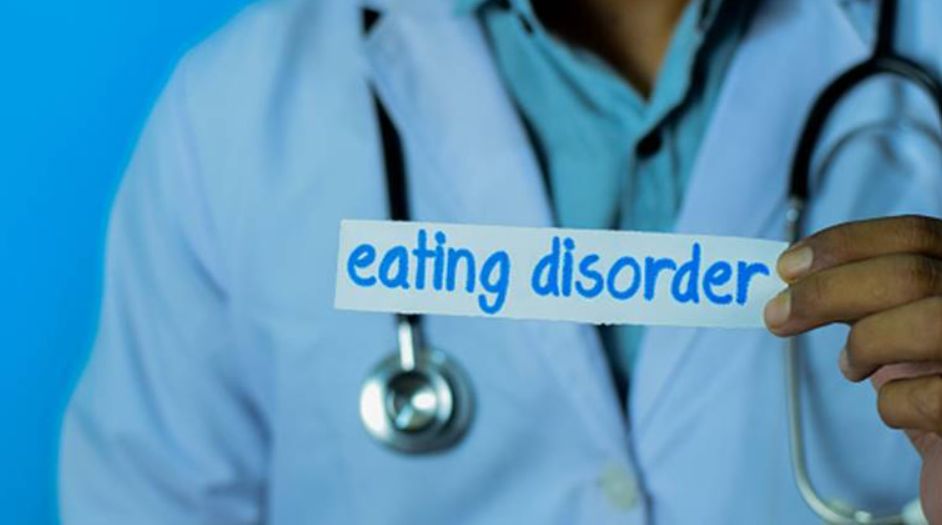
Introduction
- An eating disorder is a mental illness involving abnormal eating habits and patterns that can cause damage to a person’s mental and physical health. Eating disorders are not uncommon amongst teenagers nowadays. With social media, diet culture, and constant judgment from people, it has been spreading like a virus. For example, let us assume a girl named “Sarah,” feels conscience or upset regarding her drastic weight gain. The teenager started to force herself to throw up after eating meals. She believed most girls at her table had done it before and they seemed fine, so it would not be an issue. After doing it for a week straight, it had now started to become a habit for her. Taking another example, “Rishi,” he used to be a short and fat kid. Used to be called names and made fun of. He had a growth spurt and now looked lean and tall. He never wanted to be “the fat kid” again, so he began taking laxatives, doing immense amounts of cardio, and reducing food intake. This continued until he felt sick, fatigued, and woke up in the middle of the night with severe stomach cramping and fever. He was then admitted to the hospital. Weight obsession, feeling conscious and insecure affects millions. Some even consider it normal. But it is not.
Symptoms Of Eating Disorders
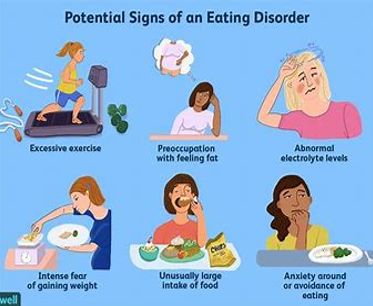
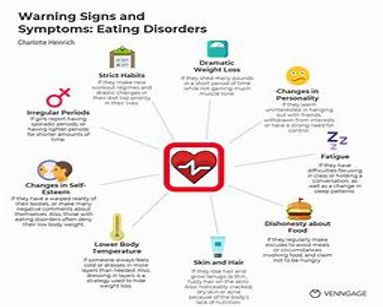
- A distorted body image.
- Skipping most meals.
- Unusual eating habits.
- Excessive focus on healthy eating.
- Making an overly restrictive diet.
- Calluses on knuckles from inducing vomiting.
- Eating in secret.
- Constant weighing.
- Extreme weight change.
- Insomnia.
- Constipation.
- Skin rashes, dry skin, or acne.
- Dental cavities or tooth enamel erosion
- Loss of hair or nail quality.
- Hyperactivity and high interest in exercise.
- Emotional problems such as irritability, moodiness, sensitivity, depression, being anxious, etc., also contribute as symptoms.
- People with eating disorders may deny that anything is wrong, but you may detect the presence of a disorder with the following symptoms and observe their changed behavior. It becomes harder and harder to detect an eating disorder these days because people manage to hide the symptoms so well along with the causes, trauma, depression, and low-self esteem that triggered the disorder.
Preventing Eating Disorders

- There is no one absolute way to prevent eating disorders, but taking a few precautions may reduce the chances of getting one. Prevention targets healthy development before getting an eating disorder. It intends early identification of an eating disorder before it gets too severe. Diet culture and body image messages from society are known by children of ages 5-7 as well. These issues will be brought to light when prevention is done. To prevent your child from an eating disorder here are a few things you may do:
1. Communicate:-
- An easy way to do this is by talking to your children regarding their eating habits. Asking them why they eat besides being hungry, talking about ways to cope with emotions, teaching them that sharing feelings with an adult will always help, etc.
2. Teasing:-
- Your child may be the prey or the predator. Regardless, it is important to teach them that teasing is not okay. You should teach them that teasing or judging people on their body sizes is not okay.
3. Body Talk:-
- You should teach them to listen to their body. Listen to what they are craving, what they feel like eating, if they feel like eating, etc. Teach them the difference between body talk, and mind talk. Do you not want to eat because your mind is telling you so, or because your body is?
4. Fitness:-
- Teach children that body sizes vary and each body is perfect. Tons of things factor body sizes, including genetics, medicinal issues, etc. Teach them that a change in body size is normal. Focus on healthy eating habits, balanced meals, and fitness.
5. Avoid dieting around children:-
By dieting in front of younger ones, they may learn that being thin and conscious about your eating habits and restricting food intake is normal. They may make a subconscious difference between bad food and good food. It may influence the relationship the child develops with food.
The Internet and its speedy development now provide modern technologies that provide opportunities for prevention. Online counseling and treatment are now available. Online programs have increased potential in prevention.
Treating Eating Disorders

- Treatments differ with a difference in type and severity of eating disorders. Sometimes more than one treatment is required. Many sorts of treatments within cognitive-behavioral therapy are used and developed for eating disorders. Psychotherapies can also be useful. Generally, as mentioned by the APA, a team approaches patients suffering from an eating disorder. The team usually consists of a therapist, psychiatrist, registered dietitian, and sometimes other clients may be included. Here are some methods of treatment:
1. Cognitive Behavioral Therapy (CBT)
- It states that behaviors and feelings are based on an individual’s thinking rather than the situation or external stimuli. They aim to change the way a person thinks from negative thinking patterns to positive thinking patterns. It is the most widespread method of treatment for eating disorders. It involves a set of cognitive drills made to enhance cognitive function.
2. Maudsley Anorexia Treatment For Adults (MANTRA)
- This focuses on information processing styles, emotional avoidance, thoughts and beliefs, and personal conflicts. These are the four core factors used in this mode of treatment, made especially for anorexia nervosa.
3. Behavioral Therapy
- This may be similar to CBT but it only focuses on changing negative behaviors to external stimuli.
4. Self Help
- This includes support groups and self-help groups, which are found to be very effective in treating eating disorders.
Apart from the modes of treatment mentioned above, other treatments include dialectical behavioural therapy, family therapy, interpersonal psychotherapy, cognitive-emotional behavioural therapy, art therapy, nutrition counselling, psychoanalytic psychotherapy, inpatient care, etc. Treatments can vary in cost, but most modes of treatment are quite costly. For children suffering from anorexia, the most well-established mode of treatment is family treatment behaviour. It is also widely used for bulimia.
Many things contribute as barriers for patients in finding treatment. Personal barriers include shame, fear of stigma, cultural norms, judgements, being unable to understand the seriousness of the disorder, lack of faith in mental health professionals, etc. Some systemic barriers are found to be quite a problem such as language differences, financial limitations, time conflicts, transportation issues, etc.
As mentioned earlier, sometimes medications come to use while treating patients with eating disorders. Orlistat is used in treating obesity. Olanzapine promotes weight gain and the ability to ameliorate behaviours relating to weight gain. Zinc supplements are helpful and cortisol is still under investigation. Prozac and Vyvanse are used to treat bulimia nervosa and binge eating disorder, as approved by the FDA. Olanzapine is also used to treat anorexia nervosa.
Causes Of Eating Disorders
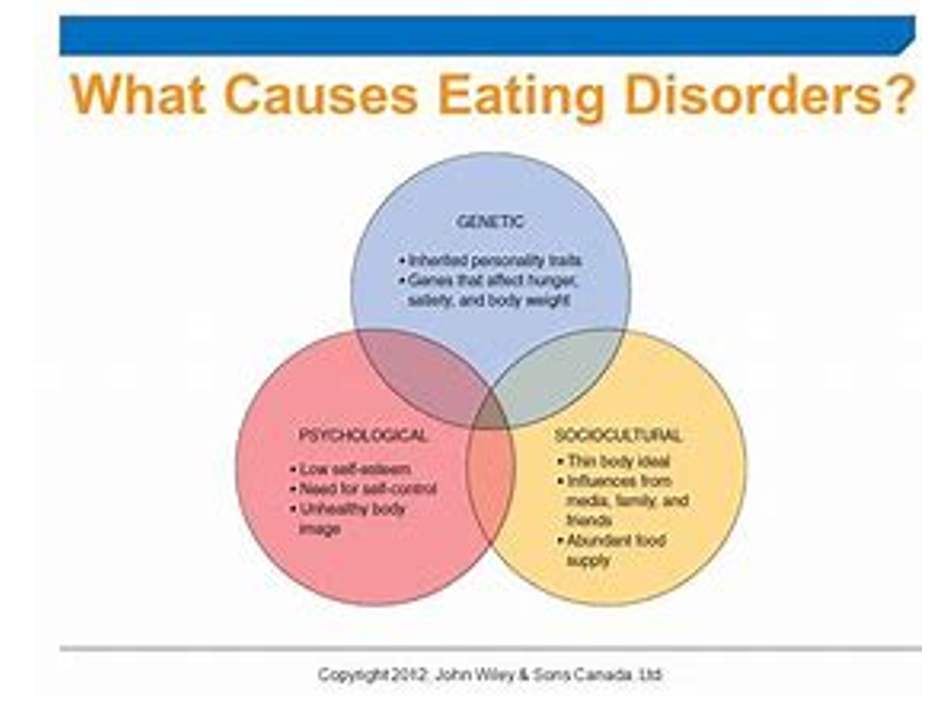
The causes of eating disorders are not well-established. Many factors contribute to the development of an eating disorder. People suffering from an eating disorder may have body dysmorphic disorder, making them perceive an altered version of their body. Studies suggest that most people with BDD also suffer from an eating disorder. 15% of this eating disorder is either bulimia nervosa or anorexia nervosa. This is because both deal with physical appearance and a distorted body image. Other contributing factors include environmental, social, and interpersonal issues promoting and sustaining these illnesses.
Media is also blamed to be the stem of eating disorders in many teens. This is because the media idealizes the slim physical shape of people. Models and celebrities even give advice and motivate people to achieve slimness. Media tends to alter the reality of people’s bodies. Most slim and thin figures appearing on your feed are because they are naturally thin or because they have altered their bodies via various dermatological and surgical processes, making them unrepresentative of the overall population.
Most studies suggest that the causes of eating disorders are mostly due to psychological, sociocultural, and environmental factors. But recent studies suggest that genetics may also be a contributing factor. It suggests that if one has a family history of eating disorders, chances of getting an eating disorder increase. People with cognitive attentional bias, celiac disease, and other medical issues, may be more prone to eating disorders. Environmental influences such as child maltreatment, social isolation, parental influence, peer pressure, etc, play a significant role in causing eating disorders. Cultural pressure depending on different cultures and their norms and beliefs also play a contributing factor. Food insecurity is also a major cause of eating disorders. It is defined as inadequate access to food in quality and quantity. Studies have shown that higher food insecurity correlates with higher levels of binge eating disorders, overall eating disorder pathology, and other such disorder-based behaviors.
Spike In Eating Disorders Due To Covid-19
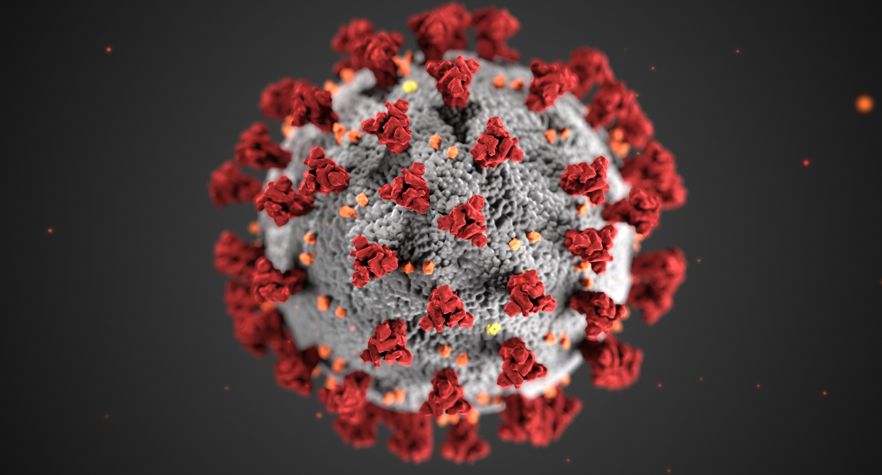
- The spike in mental illnesses during the covid-19 pandemic was drastic. One such mental illness which spiked dramatically was eating disorders. This brings an urgent need to raise awareness of these disorders. Eating disorders increased during the pandemic by 15.3% in 2020 compared to previous years, increasing steadily from March. The increase occurred primarily in girls and women and was observed in adolescents with anorexia nervosa.
=> Three main pathways contributed to the spike in eating disorders:-
- One, disruption in daily routines and constraints to outdoor activities, which increase weight and shape concerns. This negatively impacted eating, exercising, sleeping, and thinking patterns, which in turn led to eating disorders. The covid-19 pandemic accompanied social restrictions which deprived individuals of social support and coping strategies. Two, due to the social restrictions and isolation, people turned to social media and the internet for support and communication. The media increased exposure to ED-related or anxiety-provoking media. It also increased dependency on video conferencing. Three, fears of contagion may increase symptoms of an ED related to health concerns or by restrictive diets focusing on increasing immunity. Elevated rates of stress, social isolation, and negative effects due to the pandemic may have also contributed to the spike.
Complications
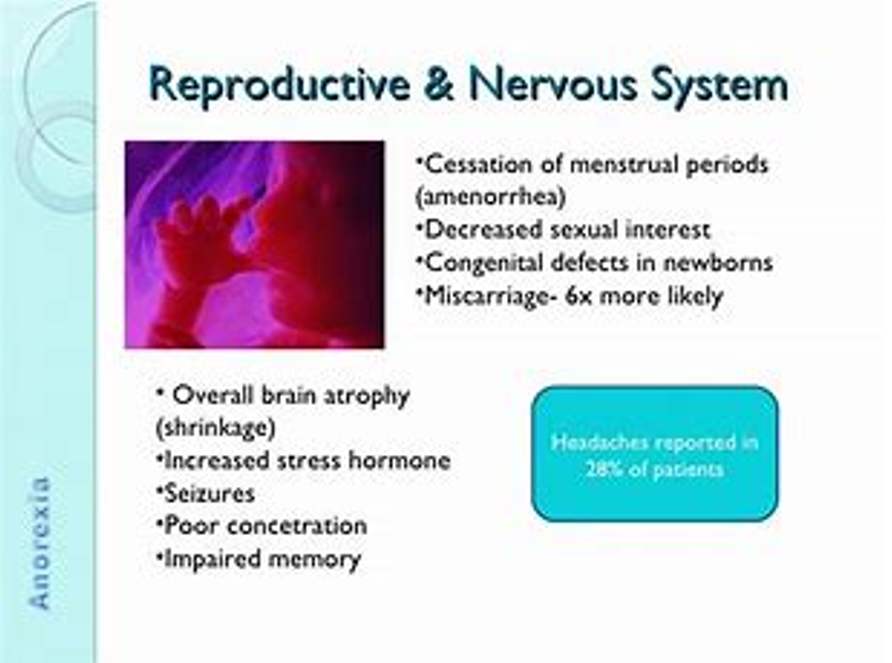
- Eating disorders cause tons of complications, some of which are fatal. The more long-lasting the disorder is, the more severe the complications are. Some such complications are as follows:-
- Serious health problems: acne, xerosis, amenorrhoea, tooth loss, cavities, constipation, diarrhoea, water retention, oedema, lanugo, telogen effluvium, cardiac arrest, hypokalemia, osteoporosis, electrolyte imbalance, hyponatremia, brain atrophy, pellagra, scurvy, kidney failure, etc.
- Depression and anxiety
- Problems with growth and development
- Social and relationship problems
- Substance use disorders
- Work and school issues
- Death
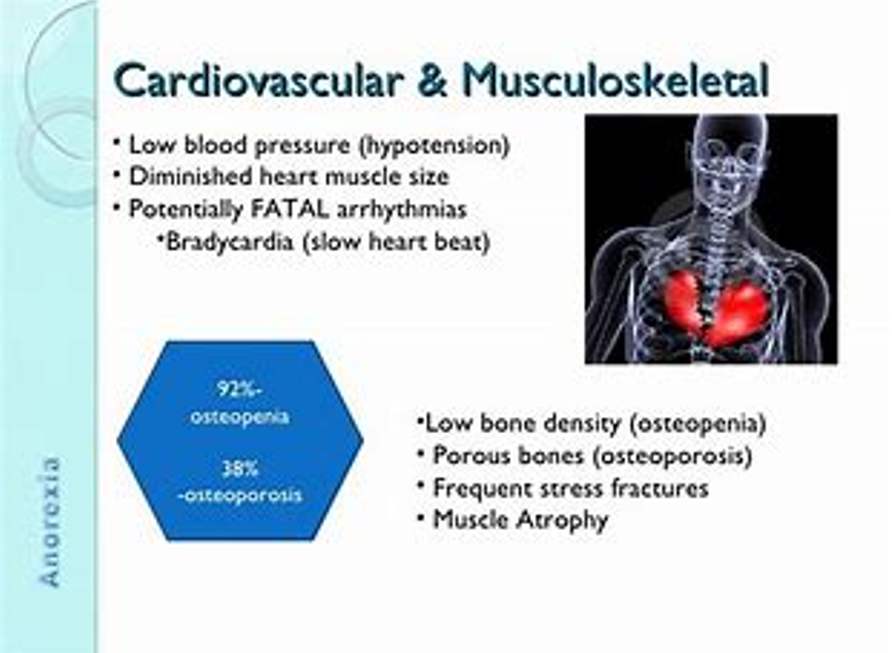
Other physical symptoms faced during or after suffering from an eating disorder are weakness, fatigue, sensitivity to cold, reduced beard growth in men, reduced libido, weight loss and growth failure. Constant or frequent vomiting may cause acid reflux leading to hoarseness. Polycystic ovary syndrome (PCOS) affecting women is directly associated with obesity but may also affect those at a normal weight. Other physical symptoms include dry lips, burning tongue, parotid gland swelling, etc.
Pro-Ana Subculture refers to the promotion of behaviours relating to anorexia nervosa. Several websites promote eating disorders, providing a platform to communicate ways and methods to sustain the disorder. Individuals share strategies and ideas to achieve extremely low weights.
Psychopathology of eating disorders revolve around altered body images, such as weight and shape, self-esteem being dependent only on the weight and shape of one’s body, fear of weight gain, etc. The main psychopathological factors of anorexia nervosa were complications in body perception, emotion processing and interpersonal conflicts.
Risk Factors
- Teenage girls and young women are at a higher risk of developing an eating disorder. Eating disorders may develop at any age, but the most common age is from teenage the to early 20s. Some factors increase the risk of developing an eating disorder, these may include:
1. Family History:-
- Eating disorders are more likely to occur in people whose parents or siblings have had an eating disorder.
2. Other Mental Illnesses:-
- Those suffering from other mental illnesses such as depression, anxiety, or obsessive-compulsive disorder, are more prone to eating disorders.
3. Dieting And Starvation:-
- Dieting is a risk factor for developing eating disorders. Starvation affects the brain, influencing mood change, thinking rigidity, anxiety, and reduction of appetite. There is significant evidence suggesting that many symptoms of eating disorders are symptoms of starvation.
3. Stress:-
- Any issue or change bringing on stress may lead to loss or increase in appetite, leading to increased chances of developing an eating disorder.
Types Of Eating Disorders

=> Many different types of eating disorders exist, some of which are:-
1. Anorexia nervosa (AN) often referred to as just “anorexia,” is a type of eating disorder wherein one restricts energy intake. It also is accompanied by an intense fear of weight gain. It is a life-threatening eating disorder characterized by extremely low body weight and a distorted perception of body weight or shape. People suffering from anorexia nervosa use extreme methods to maintain low weights and achieve lower weights. Anorexia has two subtypes: the restricting type and the binge-eating/purging type. In the restricting type weight loss is achieved via dieting, fasting, excessive exercise, limiting calorie intake and use of drugs related to weight loss. The binge eating/purging type involves recurring episodes of binge eating and purging behavior. This includes self-induced vomiting, misuse of laxatives, and diuretics. The severity of AN is calculated via BMI. BMI below 15 is considered an extreme case of AN.
2. Bulimia nervosa (BN) is viewed as recurring episodes of binge eating followed by purging. Fasting may also be substituted in place of purging. However, in bulimia nervosa, body weight remains the same. The severity of BN is seen by the number of bulimic episodes per week.
3. Binge-eating disorder is characterized by recurrent episodes of binge eating without the use of compensatory behaviors such as fasting and purging. Binge eating disorder involves eating rapidly, eating until one is uncomfortably full, and eating large amounts of food even when one is not hungry. One may feel guilty or embarrassed by how much one eats and thus eats alone. The severity of BED is measured by the frequency of BED episodes per week.
4. Pica is an eating disorder characterized by the constant consumption of nonnutritive or nonfood substances which is not culturally supported or developmentally normal. Substances consumed vary with age and availability, but the most consumed substances include soap, paper, chalk, hair, etc. Causes of pica include iron deficiency, malnutrition, pregnancy, and other mental illnesses such as autism, intellectual disability, and schizophrenia.
5. Rumination disorder encompasses repeated regurgitation of food, which could be re-chewed, re-swallowed or spit out. For this disorder to be diagnosed it must be persistent for at least one month.
6. ARFID is a feeding disturbance such as lack of interest in eating food, avoidance based on sensory characteristics of food or concern about the consequences of consumption of food. It is associated with weight loss, nutritional deficiency, etc.
7. Other Specified Feeding or Eating-disorders (OSFED) is an eating disorder that does not meet DSM-5 criteria for AN, BN, BED. Some of these disorders are atypical anorexia nervosa, atypical bulimia nervosa, etc.
- Other types of eating disorders that are not as significant include compulsive overeating, diabulimia, drunkorexia, night eating syndrome, nocturnal sleep-related eating disorder, gourmand syndrome, orthorexia Nervosa, etc.
Top 13 Interesting Facts About Eating Disorders
Only one eating disorder can be diagnosed at a time.
36% of adolescent girls (more than one out of three), believed that they were overweight and 59% were trying to lose weight.
More than 90% of people with eating disorders are girls.
The Covid-19 pandemic dramatically raised the demand for eating disorder services, especially in England. The English NHS struggled to meet the needs and advised that services should not impose thresholds using BMI or duration of illness to determine whether or not services should be provided. Although this was assigned, many reports stated that these recommendations were not followed.
Teenage girls and young women are more at risk than teenage boys and young men to develop anorexia nervosa or bulimia nervosa.
Eating disorders have the highest mortality rate amongst all mental illnesses.
Every hour at least 1 individual dies in the US due to an eating disorder.
About 30 million people only in the US struggle with an eating disorder.
In the USA eating disorders are the least funded out of all mental illness research.
Dieting is found to be the most important predictor of a developing eating disorder.
Only 1 out of 10 people with an eating disorder receive treatment.
Many people with an eating disorder look healthy yet may be extremely ill.
95% of people with eating disorders are between the ages of 12 and 25.






